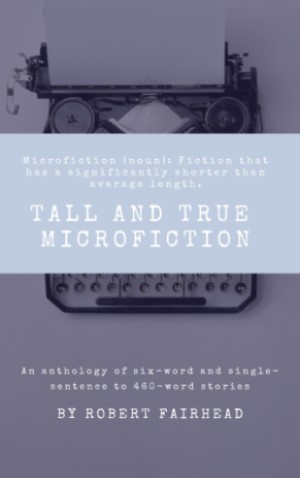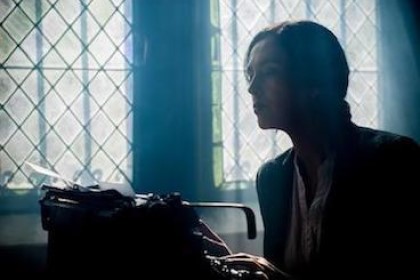12+ I discovered the microfiction genre when I reviewed Loopholes by Susan McCreery in 2017. By definition, brevity is the key to good microfiction. The stories in Loopholes range from several paragraphs over one or two pages to only three short sentences. There's no room for plot and character development, so every word must count.
McCreery plunges the reader into perfectly formed glimpses of everyday lives, with no time to settle in and catch our breath before wrenching us back to reflect on what we've read, what may have led to the situation, and how it might end. Microfiction relies on the writer's skill and the reader's imagination to tell a story, and McCreery's gift is writing immediately recognisable vignettes.
A perfect example is the shortest piece in the collection — the three-sentence Tough Love. A father brings home his daughter from a hospital. We don't know the nature or extent of her injuries, but we are left believing in a father's love and determination for his daughter's recovery.
The genre will not be to everyone's taste. Some readers may consider it a modern malaise, where the pace of life has become too fast to enjoy a leisurely read. Or Twitteresque, with US Presidential pronouncements delivered in 280-character tweets. And yet, microfiction is not a recent form. For example, legend has it that in response to a challenge to write a six-word novel, Ernest Hemingway wrote: "For sale: baby shoes, never worn."
Dabbling in Microfiction
As I mentioned in my review, I started "dabbling in microfiction" after reading Loopholes. I had a short story in my writing folder, Her, written in 1992 following a dream that felt so real it reminded me of the 3rd century BC Chinese philosopher Chuang Chou.
One night, Chou dreamed he was a butterfly, "fluttering hither and thither, enjoying itself to the full of its bent", unaware he was Chou. When Chou awoke, he was himself again but later observed, "I do not know whether I was then a man dreaming I was a butterfly, or whether I am now a butterfly, dreaming I am a man."
I didn't dream I was a butterfly. Instead, I dreamed I'd bumped into someone I once knew while walking along the Brighton Promenade in England (where I then lived). And I used elements from the dream to write a surreal short story. But at only 460 words, Her was too short for the genre. So I filed it away until 2017, when I revisited the story and shared it as microfiction, later releasing Her as Episode 11 of the Tall And True Short Reads storytelling podcast.
More Microfiction
At the same time, I revisited other short pieces in my writing folder, There Is No Need To Wake Up and And I Didn't Even Get Convicted, which I'd written for local radio station competitions in 2000 and 2014. I also started writing shorter microfiction, like A Mona Lisa Smile and We Need to Talk, in 2018 and 2019. And I narrated We Need to Talk and two other pieces for Episode 16 of the podcast, Three Minute Microfiction.
COVID lockdowns provided the perfect environment for writing microfiction, such as Pandemic Fiction for Meanjin magazine, Elephant in the Room & Other 23-Word Stories, and Signs of the Second Coming in 2020 and 2021. Once again, releasing Signs of the Second Coming as Episode 25 of Tall And True Short Reads
In recent years, challenges by Writing NSW, the Australian Writers' Centre and the #WritingCommunity on Twitter had me writing dozens of microfiction stories. And in March 2023, I set myself the goal of writing a 61-word story to mark my 61st birthday.
 Buy on Amazon, Apple Books and Kobo
Buy on Amazon, Apple Books and Kobo
Tall And True Microfiction
This anthology, drawn from Tall And True and other sources, features 70 examples of my microfiction. Some are Hemingway-esque six-word stories, others one to a few sentences, and there are longer pieces, like the 460-word Her. I've presented the stories in chronological chapters, with insight into when, why and how I wrote them.
I've also provided links to story prompts on social media and episodes if I've narrated stories for Tall And True Short Reads, like Her, We Need to Talk and Signs of the Second Coming. And I wrote a new piece of microfiction for the final chapter, The End, 70 words long, one for each story in the anthology:
I was there at the beginning, cradling you as a wrinkled newborn. I watched you take your first steps, kissed your cuts and bruises, and walked you to school. I taught you to drive and collected you when the police caught you drink driving. I tried talking sense into you. And now I’m holding your hand. The doctors have turned off your life support, and I'm waiting for the end.
Like all my writing, The End fuses elements from my life with my writer's imagination. I often reflect on the miracle of holding my "wrinkled newborn" son (my only child) for the first time. And on memories of watching him take his first steps, bandaging and soothing childhood cuts and bruises, walking him to school, teaching him to drive, and all the other magical moments I've loved being a dad.
Thankfully, my son is more sensible, and the road rules and policing are stricter than when his dad was a reckless young driver in the 1970s and '80s. However, like many parents, I suffer irrational angst at the thought of a late-night phone call when he's away from home, which I encapsulate in my story's closing line.
LOVE WRITING?
Share and showcase your writing — fiction, nonfiction and reviews — as a Guest Writer on Tall And True.
The Power of Writing
As with the pieces in McCreery's collection, The End is a glimpse of everyday life, albeit one all parents dread. It also demonstrates the power of writing to evoke emotions — happy or sad — whether in a novel, short story or microfiction.
I hope readers enjoy Tall And True Microfiction as much as I enjoyed creating it. Perhaps my anthology will inspire you to "dabble in the form" like Susan McCreery's Loopholes did for me in 2017.
Episode 83 of Tall And True Short Reads
I've also released the Tall And True Microfiction Anthology blog post on Tall And True Short Reads, with episode extracts from Her, Three Minute Microfiction and Signs of the Second Coming, and narrating the microfiction pieces, My 61-Word Birthday Story and The End.
Listen now on Acast
And, paraphrasing my usual podcast episode sign-off, I added, please tell your family and friends about Tall And Tue Microfiction, Tall And True Short Reads and the Tall And True writers' website.
© 2023 Robert Fairhead
N.B. This blog post is adapted from the anthology's Introduction. You might like to read a post about my first collection of short stories, published in 2020, Both Sides of the Story.
Robert is a writer and editor at Tall And True and blogs on his eponymous website, RobertFairhead.com. He also writes and narrates episodes for the Tall And True Short Reads storytelling podcast, featuring his short stories, blog posts and other writing from Tall And True.
Robert's book reviews and other writing have appeared in print and online media. In 2020, he published his début collection of short stories, Both Sides of the Story. In 2021, Robert published his first twelve short stories for the Furious Fiction writing competition, Twelve Furious Months, and in 2022, his second collection of Furious Fictions, Twelve More Furious Months. And in 2023, he published an anthology of his microfiction, Tall And True Microfiction.
Besides writing, Robert's favourite pastimes include reading, watching Aussie Rules football with his son and walking his dog.
He has also enjoyed a one-night stand as a stand-up comic.





